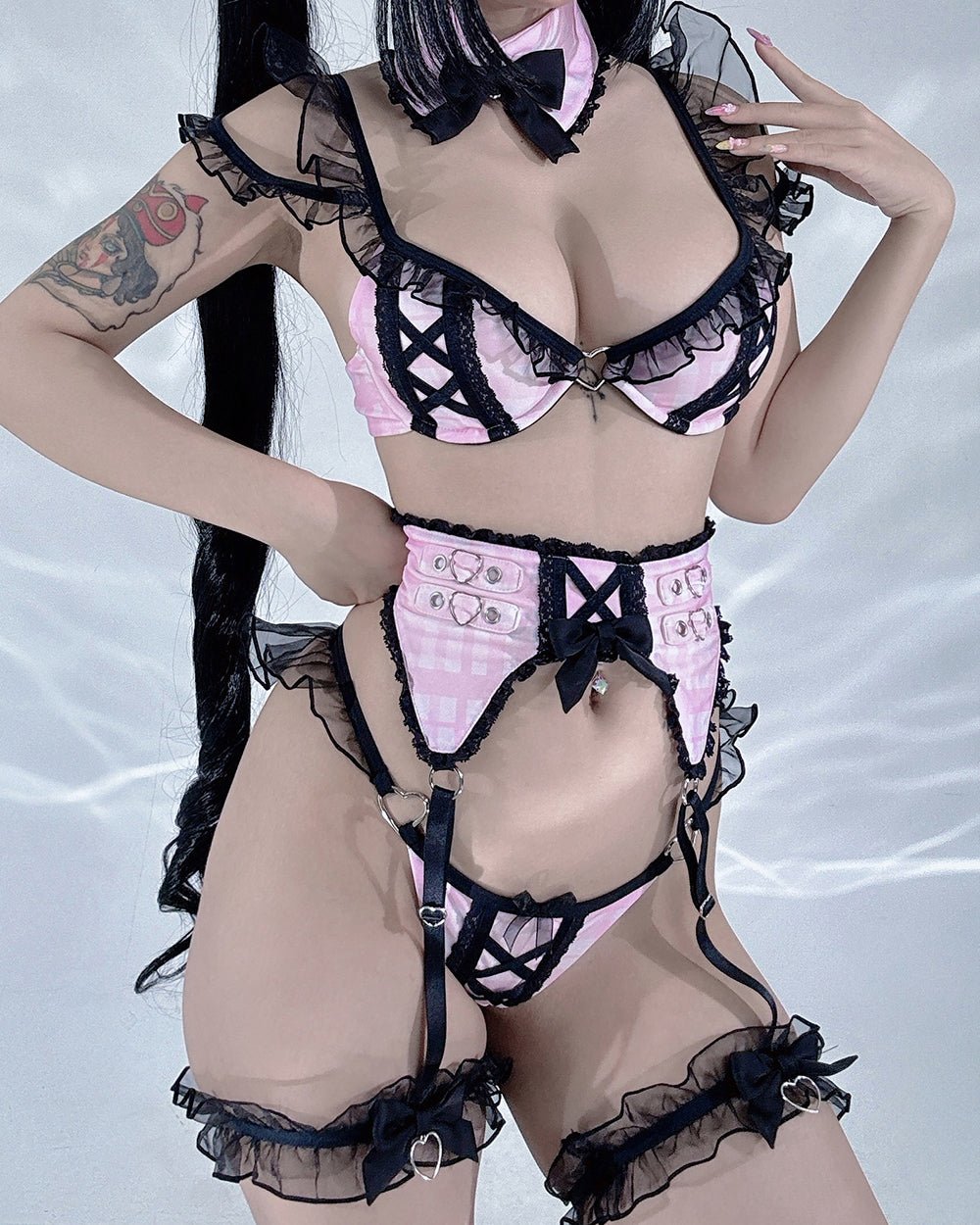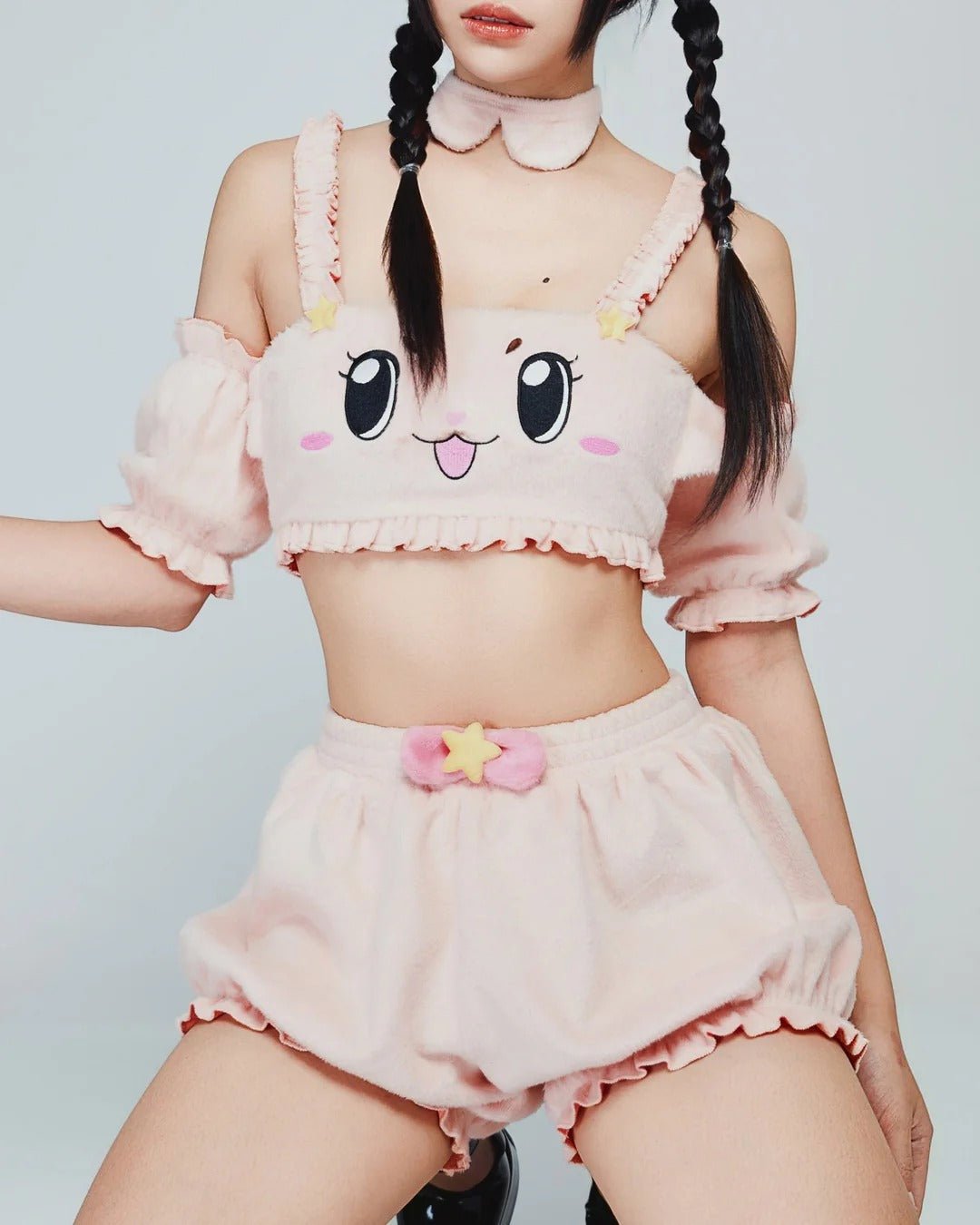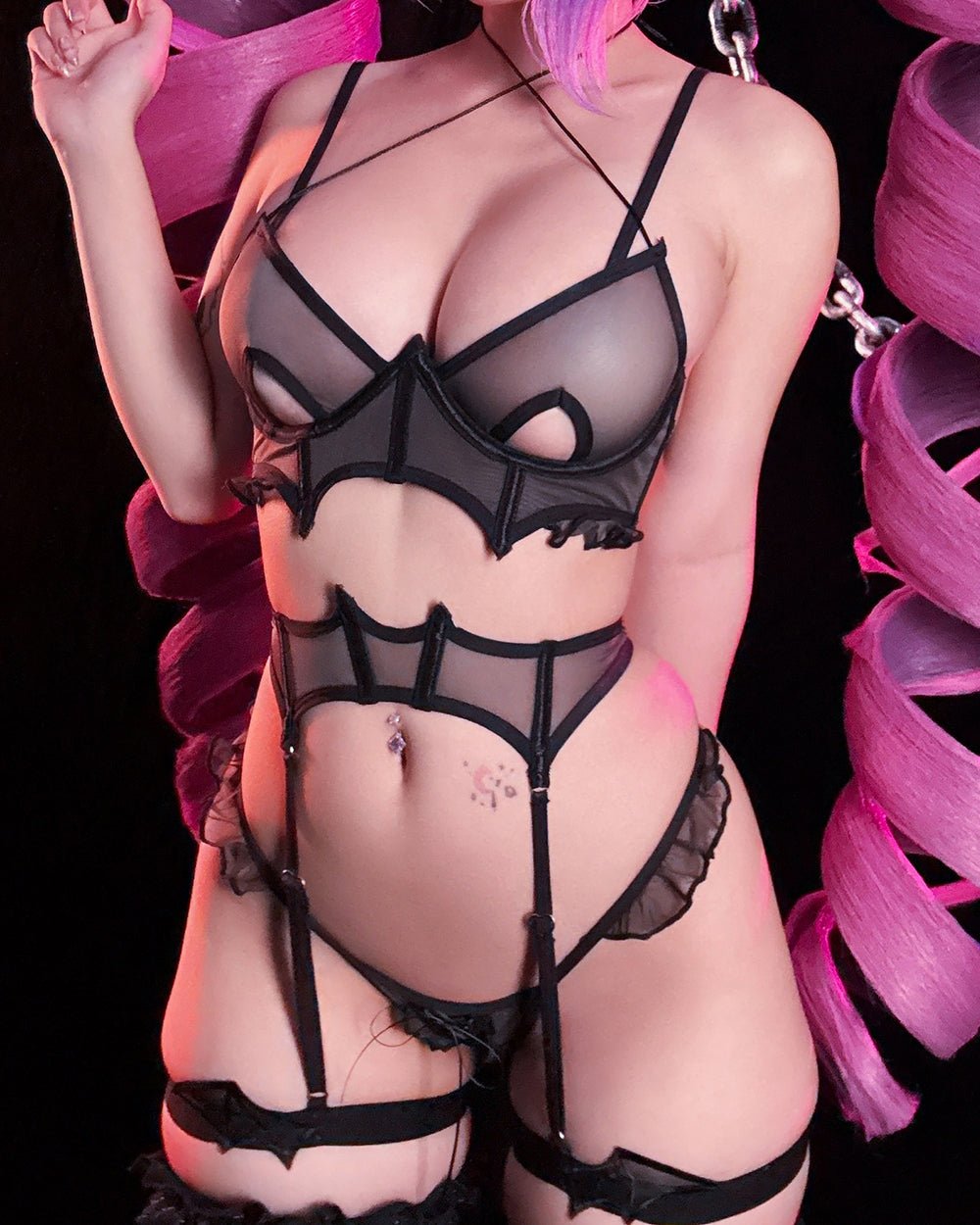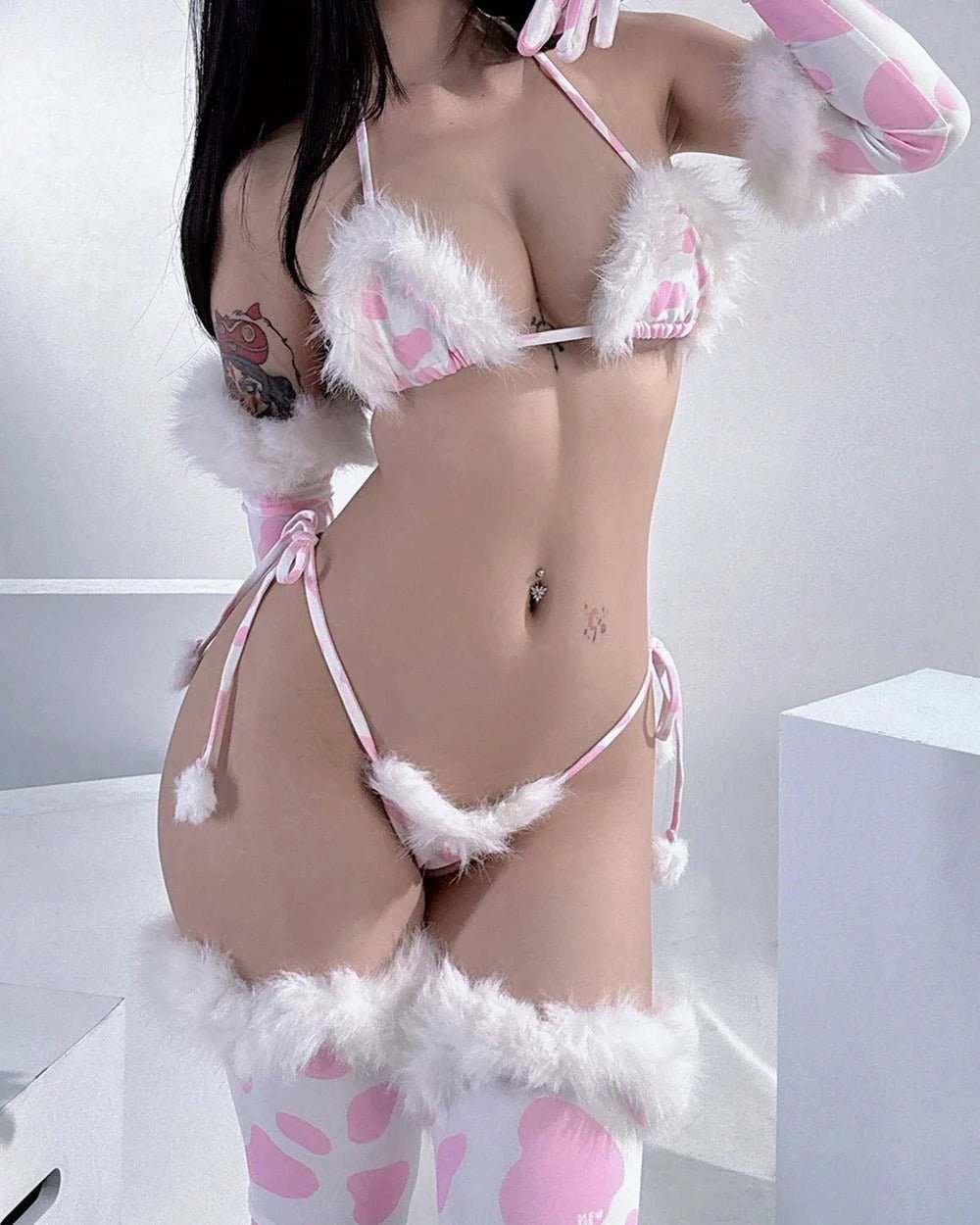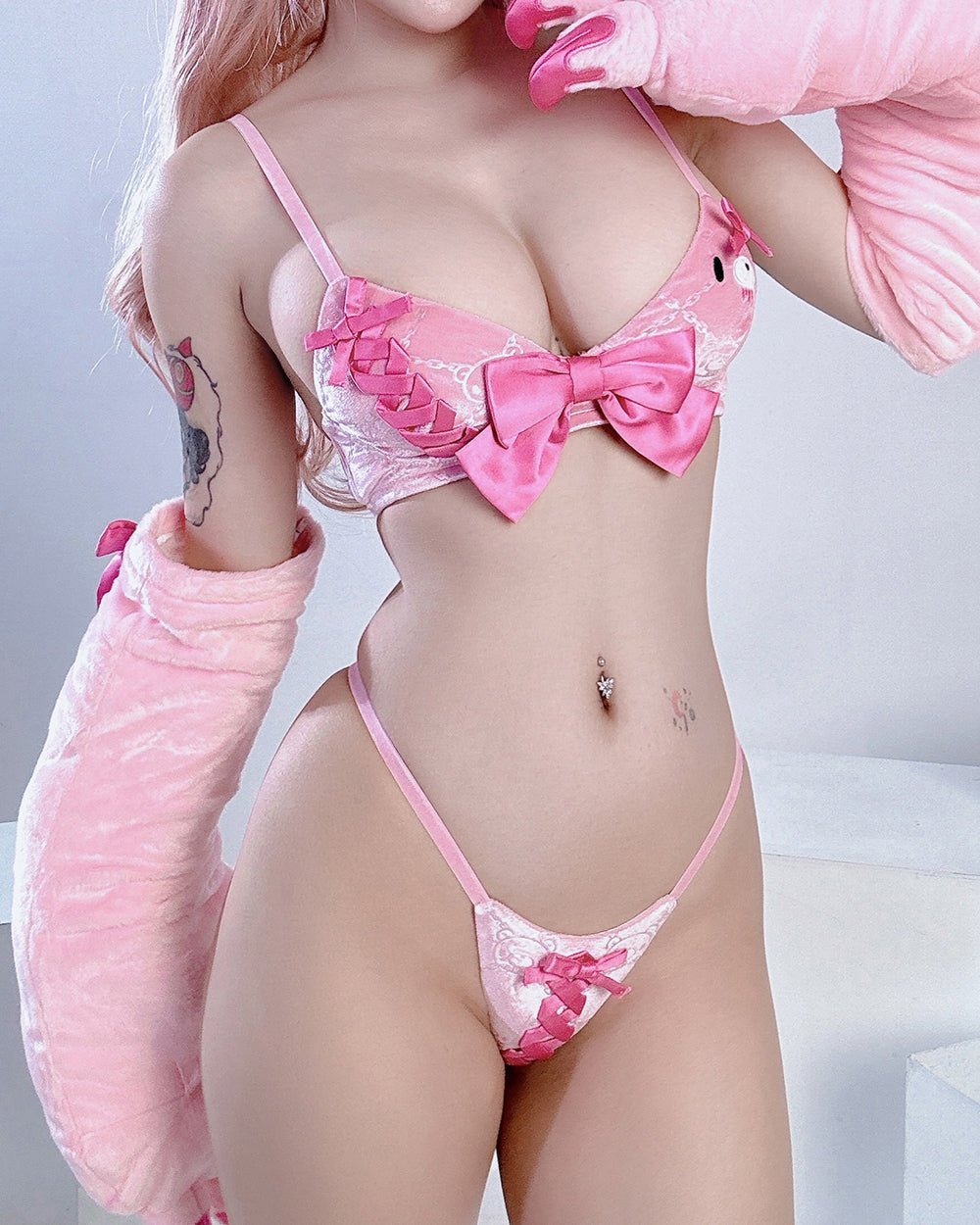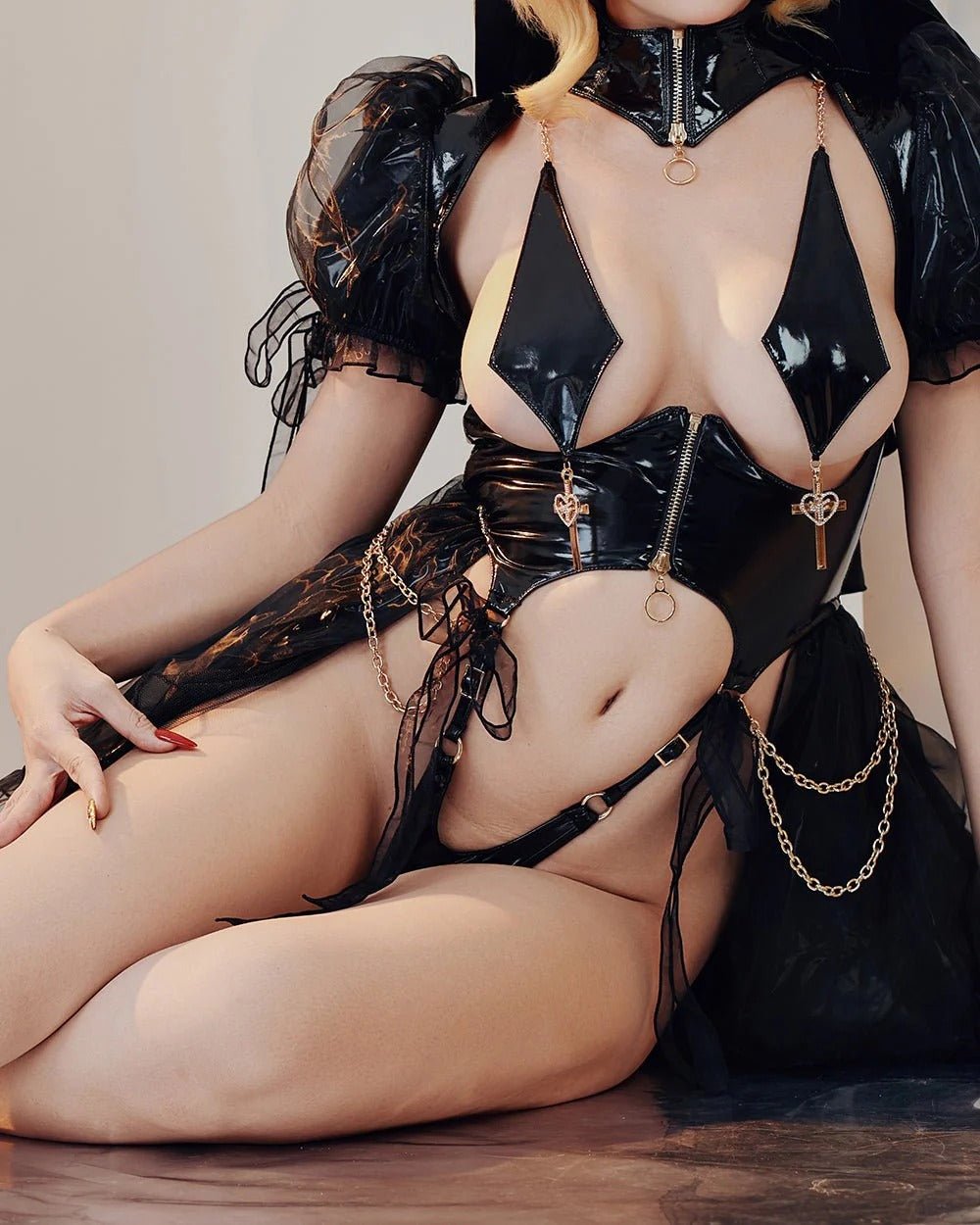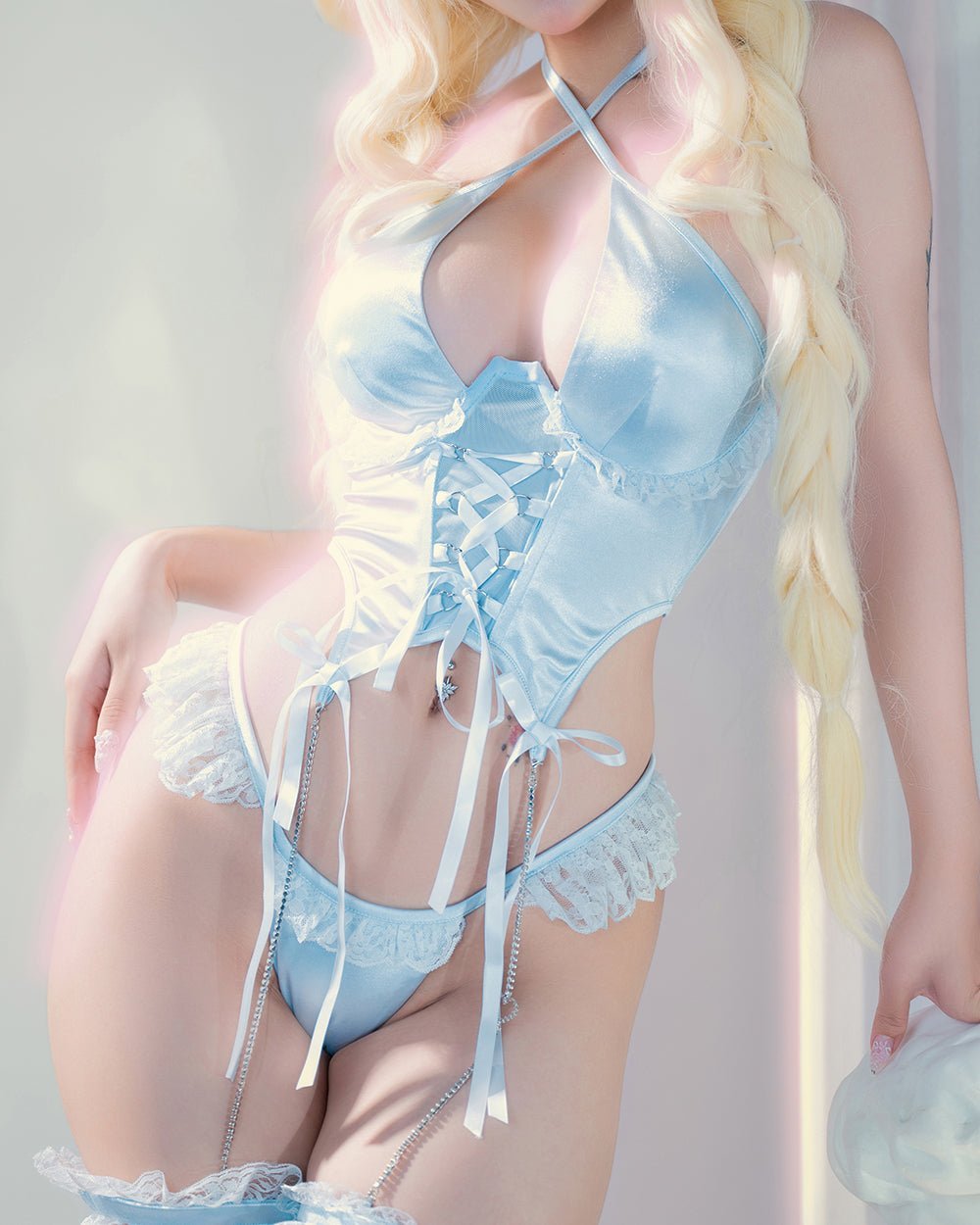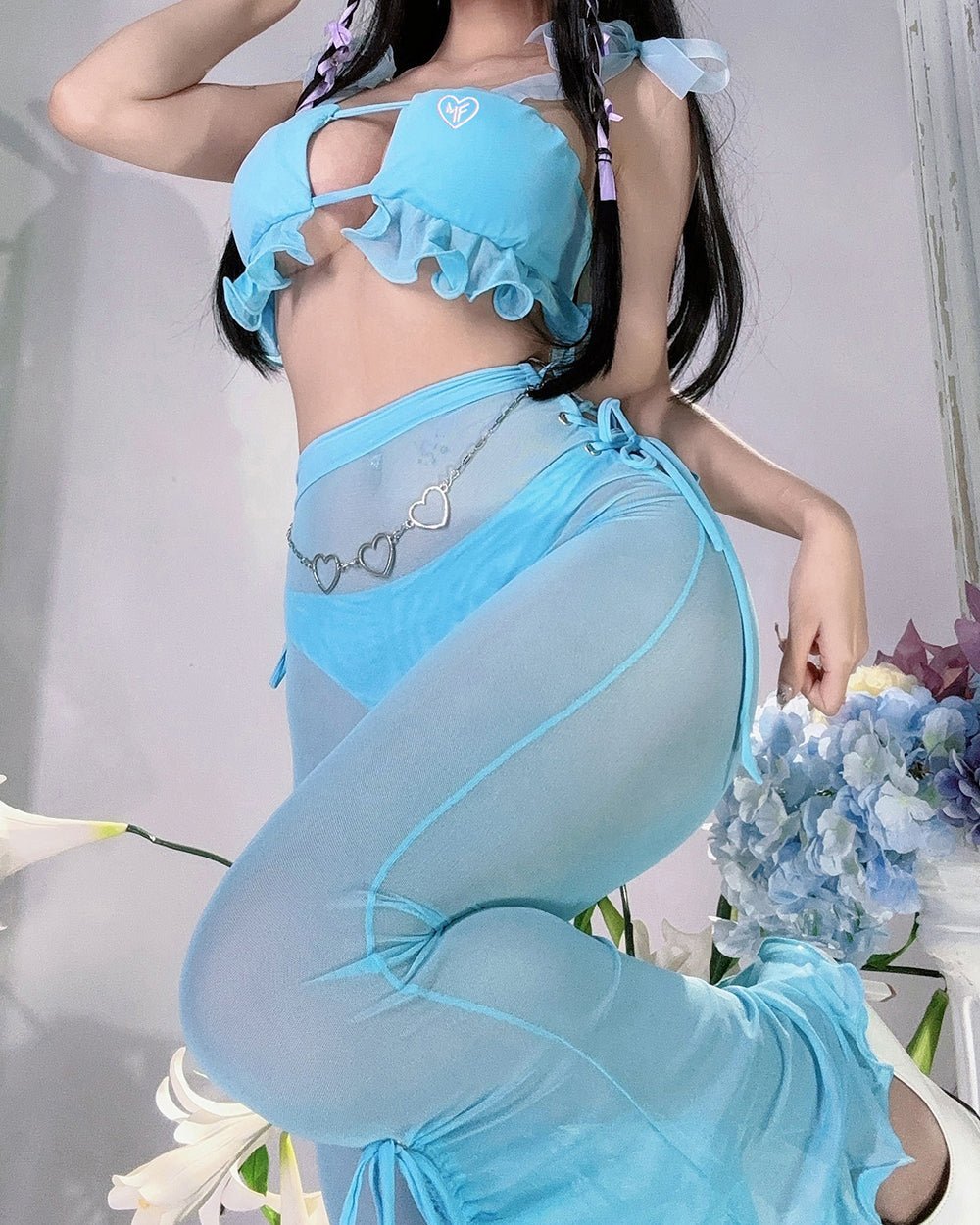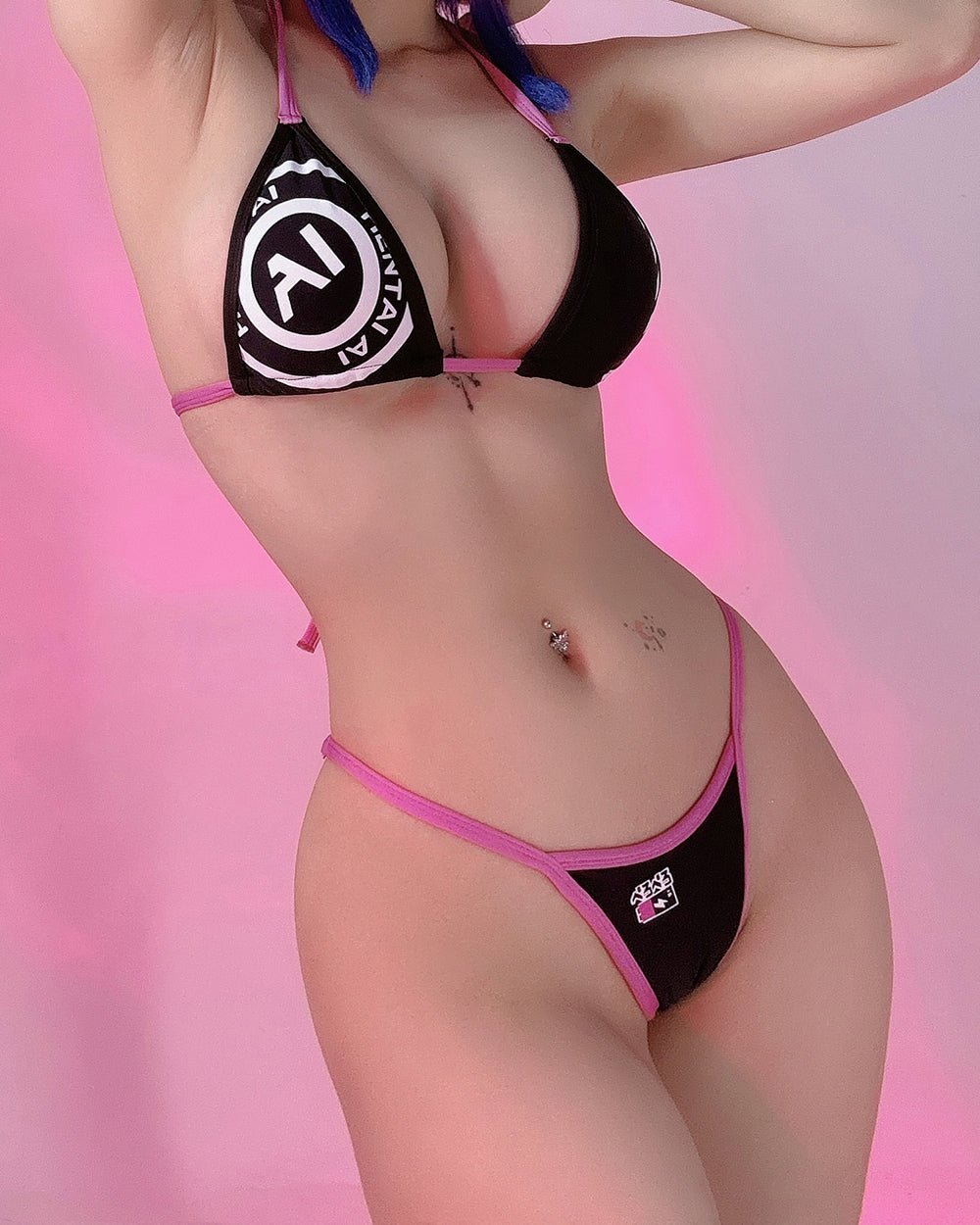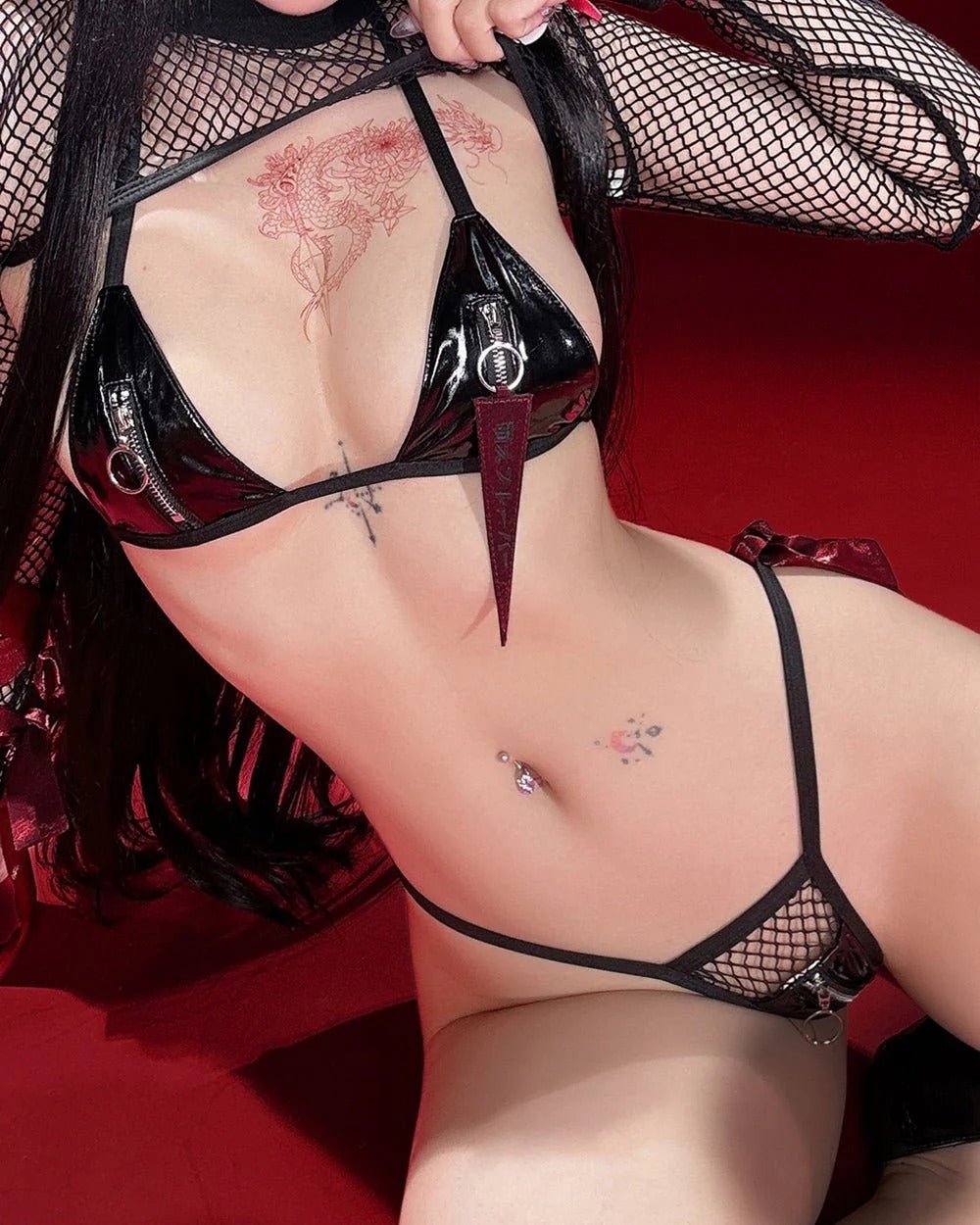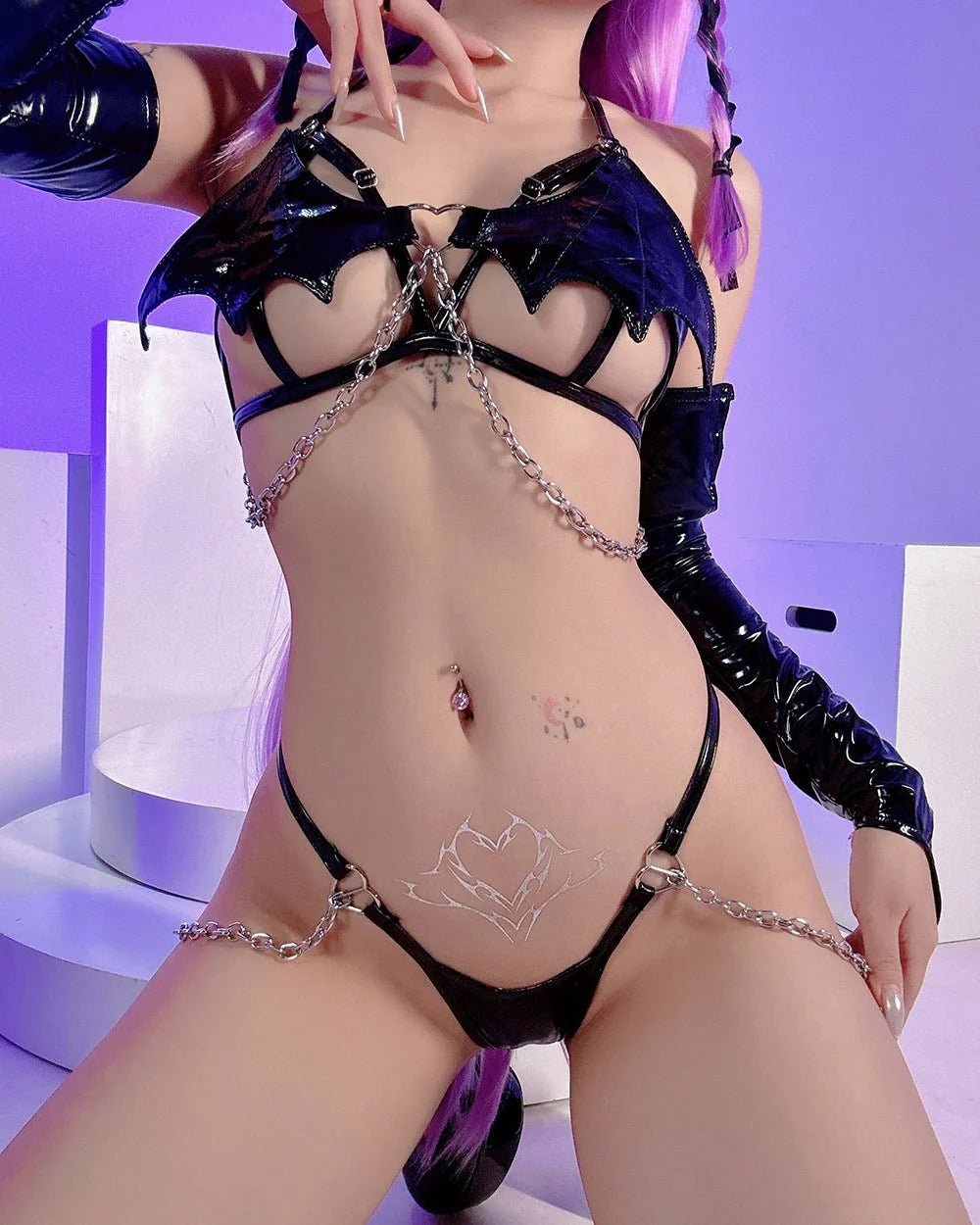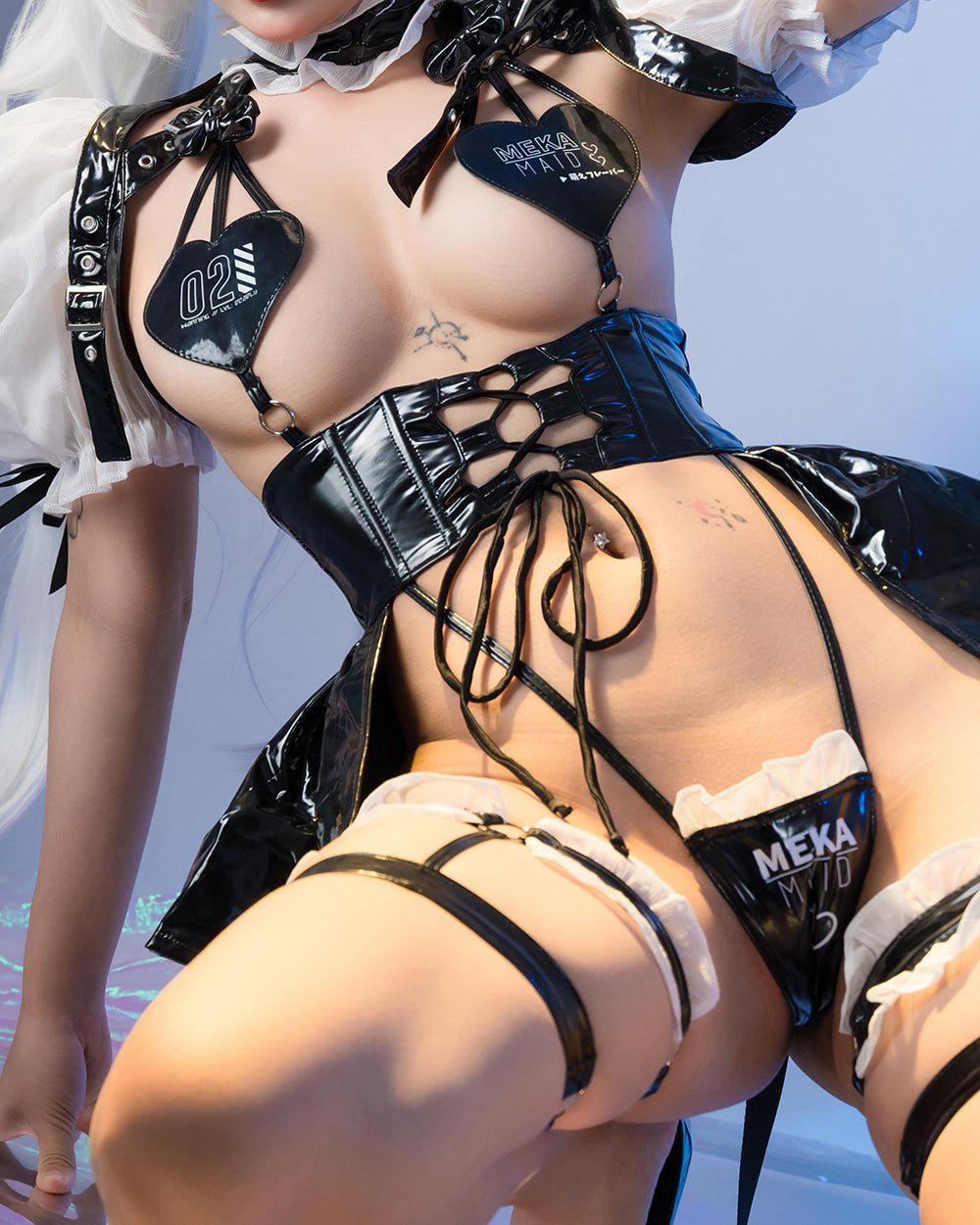Jirai Kei Fashion: Full Guide to Japan's Dark Feminine Style
People searching for Jirai Kei fashion often feel drawn to its unique blend of kawaii cuteness and melancholic darkness, yet struggle to embody this complex aesthetic authentically. Whether someone has encountered this style through social media or anime culture, they're typically looking for guidance on how to create their jirai kei look without appropriating its deeper cultural meanings.
This style represents more than clothing choices—it's a form of emotional expression that resonates with those who find beauty in vulnerability and strength in embracing their complex feelings.
What is Jirai Kei Fashion?

Jirai kei fashion emerged from Japanese internet culture in the early 2020s, originating from the derogatory term "jirai onna", which translates to "landmine type" or "landmine girl." This Japanese fashion movement transforms what was initially a derogatory term into a powerful form of self-expression, combining elements of gothic lolita fashion with kawaii culture to create a distinctive aesthetic that celebrates emotional authenticity.
The Jirai Kei style centers around a carefully curated contrast between innocent, doll-like elements and darker, Gothic influences. Practitioners typically incorporate pale, porcelain-like makeup, twin-tailed hairstyles, and clothing that blends black and pink color schemes with lace, ribbons, and platform shoes. This aesthetic choice represents more than fashion—it's a visual language for expressing complex emotional states and challenging traditional notions of beauty.
Key Elements of Jirai Kei Style
Color Palette and Visual Harmony
The jirai kei style color scheme revolves around a sophisticated three-color system: black, white, and various shades of pink. These colors work together to create visual tension that mirrors the emotional complexity the style represents. Black provides the gothic foundation, while white adds ethereal lightness, and pink introduces the kawaii element that softens the overall dark appearance.
Silhouette and Proportion
Jirai kei silhouettes emphasize femininity through carefully constructed proportions. High-waisted skirts create an hourglass shape while maintaining modesty, often paired with fitted tops that balance the voluminous bottom half. Platform shoes add height and drama, contributing to the doll-like aesthetic that is central to the style.
Layering plays a crucial role in achieving authentic jirai proportions. Practitioners often wear multiple items simultaneously—lace socks under platform shoes, cardigans over fitted tops, or accessories that create visual interest without overwhelming the core silhouette.
Texture and Material Selection
Fabric choices in kei fashion emphasize contrast and sensory appeal. Delicate materials like lace, chiffon, and silk create softness that balances harder elements such as leather, vinyl, or metal accessories. This textural contrast reinforces the style's core theme of juxtaposing innocence with edge.
Popular Accessories in Jirai Kei
Hair Accessories and Styling
Hair accessories serve as primary focal points in jirai styling, with twin tails being the signature hairstyle. These pigtails typically feature curled ends and decorative elements such as ribbons, bows, or character-themed clips. The positioning and styling of twin tails requires practice to achieve the proper doll-like proportions that define the aesthetic.
Beyond basic twin tails, advanced practitioners incorporate specialized accessories, such as hair rings, decorative bobby pins, or themed clips featuring characters from anime or gaming culture.
Bag Selection and Symbolic Items
Small backpacks, particularly those with character themes or in the signature color palette, serve both practical and aesthetic functions. These bags often feature additional decorative elements, such as keychains, pins, or attached plushies.
Beyond mainstream options, Jirai practitioners often customize their bags with pins, patches, or attachments that reflect personal interests while maintaining aesthetic coherence.
Platform Shoes and Footwear
Platform shoes represent perhaps the most immediately recognizable element of jirai kei fashion. These shoes typically feature significant height increases—often 2-4 inches—while incorporating design elements like buckles, straps, or decorative hardware. The platforms serve multiple functions: they alter body proportions to create a more doll-like appearance, add drama to the overall look, and provide opportunities for expressing personal style through design choices.
How to Create Your Own Jirai Kei Look
Building a Foundation Wardrobe
Creating an authentic Jirai wardrobe begins with establishing foundational pieces that can be mixed and matched effectively. Start with a high-waisted pleated skirt in black or dark gray, as this item serves as the cornerstone for most jirai outfits. Pair this with fitted tops in white or pale pink that can accommodate layering with cardigans or light jackets.
The plus-size community has enthusiastically embraced jirai kei fashion, with many pieces available in extended sizing that maintain the essential proportions and aesthetic elements. When building a foundation wardrobe, prioritize fit over exact brand matching, as proper proportions matter more than specific labels for achieving authentic presentation.
Essential Jirai Kei Pieces and Styling
For those seeking authentic Jirai pieces, MOEFLAVOR offers anime-inspired designs in inclusive sizing from XS to 4XL. Their gyaru jirai kei collection features carefully curated pieces that capture the aesthetic's essential elements while maintaining high-quality construction and attention to detail.
The Japanese Jirai Kei Babydoll Lingerie Set exemplifies the style's balance between innocence and edge, featuring delicate lace details paired with the signature black and pink color scheme. This piece demonstrates how Jirai fashion transforms intimate wear into artistic expression while maintaining comfort and quality craftsmanship.
For swimwear options that embody Jirai aesthetics, the Jirai Kei Grey Pink Bikini showcases how the style adapts to different garment categories while preserving its core visual elements. The thoughtful color combination and design details reflect the movement's emphasis on authentic expression through carefully considered aesthetic choices.
Jirai Kei Makeup Application Techniques
Jirai kei makeup focuses on creating a doll-like appearance that emphasizes large eyes, pale complexion, and subtle color accents. This makeup style begins with a pale foundation that creates a porcelain-like skin tone, often lighter than the natural skin tone, to achieve the ethereal quality central to the aesthetic. This pale base serves as the canvas for more dramatic eye makeup and lip makeup treatments.
Layering and Coordination
Successful jirai styling requires mastering layering techniques that create visual interest without appearing cluttered. Start with basic combinations—such as a fitted top under an open cardigan—then gradually incorporate additional elements like lace socks, decorative belts, or layered necklaces. Each additional layer should contribute to the overall aesthetic rather than competing for attention.
The Japanese Jirai Kei Garter Lingerie Set demonstrates advanced layering principles, combining multiple elements that work together to create a cohesive visual impact. This type of detailed construction shows how MOEFLAVOR's exclusive designs offer custom-fit options with separate top and bottom sizing, accommodating diverse body types while maintaining aesthetic integrity.
The Meaning Behind Jirai Kei Style

Cultural Context and Emotional Expression
Jirai kei fashion represents more than aesthetic choices—it functions as a form of emotional communication that allows practitioners to externalize complex feelings about identity, vulnerability, and strength. The style emerged from Japanese youth culture during a period of social isolation and uncertainty, providing a visual language for experiences that traditional fashion categories couldn't address.
Community and Support Networks
Online communities centered around Jirai fashion often function as informal support networks where participants share not only styling advice but also emotional experiences and mutual encouragement. These communities demonstrate how fashion subcultures can provide meaningful connections and understanding for individuals who might otherwise feel isolated or misunderstood.
Identity and Self-Empowerment
For many practitioners, Jirai fashion provides a framework for exploring and expressing identity in ways that mainstream fashion cannot accommodate. The style's embrace of contradictions—cute yet dark, innocent yet knowing—mirrors the complexity of contemporary youth experience and offers alternatives to simplified identity categories.
How Modern Trends Shape Jirai Kei
Digital Culture and Social Media Influence
Social media platforms have fundamentally shaped Jirai fashion development, with various styles evolving rapidly through shared content, tutorials, and community feedback. Unlike traditional fashion movements that developed through print media or physical scenes, Jirai represents one of the first major fashion subcultures to originate and develop primarily through digital platforms.
TikTok tutorials and Instagram posts provide accessible education about styling techniques, makeup application, and outfit coordination. This digital accessibility has democratized participation in Jirai culture while enabling rapid style evolution and international adoption. The visual nature of these platforms particularly suits Jirai's emphasis on carefully constructed aesthetic presentation.
Global Adaptation and Local Interpretation
As Jirai spreads internationally, practitioners adapt core elements to local contexts while maintaining essential aesthetic principles. These adaptations demonstrate the style's flexibility and cultural resilience, as practitioners find ways to honor origins while making the aesthetic relevant to their cultural contexts and practical needs.
International practitioners often incorporate locally available brands and materials while maintaining color palettes, silhouettes, and styling principles that connect their presentations to the broader jirai community.
Commercial Development and Accessibility
The growing popularity of Jirai fashion has attracted commercial attention, with various retailers developing lines specifically targeting this market. MOEFLAVOR stands out by offering original anime-inspired designs that aren't mass-produced copies, ensuring each piece maintains the authenticity and exclusivity that Jirai enthusiasts value. Their commitment to inclusive sizing and custom-fit options reflects an understanding of the community's diverse needs and body-positive values.
Social Media's Role in Spreading Jirai Kei Style
Platform-Specific Development
Different social media platforms have contributed uniquely to the Jirai fashion development and dissemination. Instagram's visual focus supports the carefully curated aesthetic presentation central to Jirai culture, while TikTok's short-form video format proves ideal for makeup tutorials and styling demonstrations. YouTube offers a platform for longer-form educational content and community discussions.
These platform differences create complementary functions within the broader Jirai digital ecosystem. Practitioners often maintain a presence across multiple platforms, utilizing each for its strengths—Instagram for outfit inspiration, TikTok for techniques, and YouTube for detailed tutorials or community discussions.
Influencer Culture and Authentic Representation
Key influencers within Jirai culture often emphasize education and community building over pure aesthetic presentation. The most respected figures in Jirai social media combine styling expertise with cultural literacy, helping newcomers understand not just how to achieve the look but also its significance and proper context.
This educational approach distinguishes Jirai influencer culture from more commercialized fashion promotion. Authentic jirai content creators typically prioritize community welfare and cultural respect over individual promotion, creating content that serves the broader community rather than simply building personal brands.
Global Community Formation
Social media enables international Jirai communities to form and maintain connections across geographic boundaries. These global communities share resources, provide mutual support, and collaborate on cultural development, all while respecting the Japanese origins of the style. This international participation enriches Jirai culture while demonstrating fashion's potential for meaningful cross-cultural communication.
Jirai Kei's Presence in Japanese Pop Culture
Anime and Gaming Influences
Jirai fashion draws significant inspiration from anime and gaming culture, particularly character designs that combine kawaii aesthetics with darker themes. This influence appears in specific styling choices, color combinations, and the overall approach to creating idealized yet emotionally complex presentations.
The relationship between Jirai and anime culture runs deeper than surface aesthetic borrowing. Both cultural forms explore themes of emotional complexity, identity performance, and the tension between innocence and experience that defines much contemporary Japanese youth culture. This thematic alignment explains why Jirai resonates so strongly within communities already engaged with anime and gaming culture.
Accessories like the Jirai Kei Kawaii Nails demonstrate how the aesthetic extends beyond clothing into detailed personal styling. These carefully designed elements reflect MOEFLAVOR's attention to authentic cultural details while providing accessible ways for practitioners to incorporate jirai elements into their overall presentation.
Street Fashion Evolution
Jirai represents the latest evolution in Japan's rich street fashion tradition, building on previous movements such as gothic lolita, decora, and visual kei, while addressing contemporary cultural concerns. This positioning within Japan's street fashion history provides cultural legitimacy while demonstrating the ongoing vitality of Japanese fashion innovation.
Media Representation and Cultural Impact
Japanese media coverage of Jirai fashion reflects broader cultural negotiations around youth expression, mental health awareness, and changing gender roles. This coverage often emphasizes the style's role in providing creative outlets for emotional expression while raising questions about the relationship between fashion choices and psychological well-being.
Frequently Asked Questions
What is the main appeal of Jirai Kei fashion?
The primary appeal lies in Jirai's unique ability to express emotional complexity through visual aesthetics. Unlike mainstream fashion that often emphasizes simplicity or obvious beauty standards, Jirai celebrates contradiction and depth. Practitioners find liberation in a style that acknowledges both the light and dark aspects of the human experience, while creating striking visual presentations that command attention and respect.
Can anyone adopt the Jirai Kei style regardless of age or background?
While Jirai originated within Japanese youth culture, its core principles of authentic self-expression and emotional honesty can resonate across age groups and cultural backgrounds. Older practitioners may adapt elements such as color palettes or makeup techniques while adjusting silhouettes and styling choices to suit their lifestyle needs. The key lies in understanding the cultural significance while finding personal ways to honor its meaning.
How can someone start incorporating Jirai Kei elements into their existing wardrobe?
Begin with small additions that introduce key elements without requiring complete wardrobe replacement. A black pleated skirt paired with existing tops, platform shoes worn with current outfits, or jirai-inspired makeup techniques can provide an introduction to the aesthetic. Gradually incorporate accessories like hair ribbons, layered necklaces, or bags in the signature color palette as comfort and interest develop.
What does "kei" mean in Japanese fashion terminology?
In Japanese fashion contexts, "kei" roughly translates to "style" or "type," indicating a specific aesthetic category or subculture. Kei fashion terms like "jirai kei," "gyaru kei," or "lolita kei" use this suffix to denote distinct styling approaches with their own rules, communities, and cultural significance. Understanding this terminology helps navigate Japanese fashion subcultures with appropriate cultural awareness.
Do practitioners need to be Japanese or live in Japan to participate in jirai kei authentically?
Authentic participation depends more on cultural respect, community engagement, and genuine appreciation than geographic location or ethnic background. International practitioners can participate meaningfully by learning about origins, supporting authentic voices within the community, and approaching the style with appropriate cultural sensitivity. The global Jirai community includes practitioners from diverse backgrounds who contribute positively to cultural development.
What's the difference between Jirai Kei and other Japanese fashion subcultures?
Jirai distinguishes itself through its unique blend of kawaii and gothic elements, an emphasis on emotional authenticity, and community-driven development via digital platforms. While sharing some aesthetic elements with Gothic Lolita and Decora styles, Jirai addresses contemporary concerns about mental health awareness, digital identity, and authentic self-expression, reflecting the current cultural context rather than historical fashion movements.
Key Takeaways
Jirai kei fashion represents far more than a trend—it's a cultural movement that transforms personal vulnerability into artistic expression while building supportive communities around shared aesthetic values. The style's careful balance of kawaii cuteness with gothic darkness creates a unique visual language that resonates with individuals seeking authentic ways to express emotional complexity.
For those interested in exploring Jirai fashion, success depends on understanding both its aesthetic elements and cultural significance. This means learning proper styling techniques while respecting the community values and cultural origins that give the movement meaning. The emphasis on authenticity over perfection creates space for personal interpretation within established frameworks.
The style's integration of plus-size inclusivity and accessibility through online communities demonstrates fashion's potential for genuine inclusivity when driven by community values rather than commercial considerations. This accessibility ensures that Jirai can continue serving a diverse range of participants while maintaining its cultural integrity and authentic community connections.
Citations:
[1] https://dokodemo.world/en/feature/344/
[2] https://www.lolitainside.com/blogs/lolita/the-fascinating-blend-of-cute-and-dark-in-japanese-fashion-jirai-kei
[3] https://www.yokogaomag.com/editorial/jirai-kei
[4] https://www.tokyoweekender.com/art_and_culture/fashion/jirai-kei-fashion/


